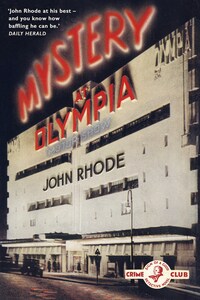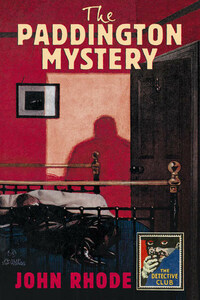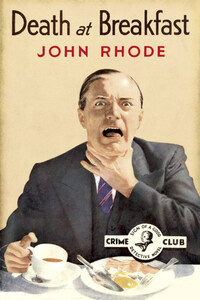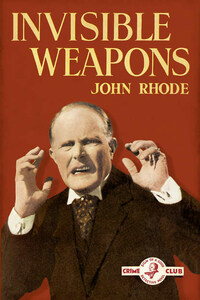COLLINS CRIME CLUB
An imprint of HarperCollinsPublishers Ltd
1 London Bridge Street
London SE1 9GF
www.harpercollins.co.uk
First published in Great Britain by Collins Crime Club 1935
Copyright © Estate of John Rhode 1935
Cover design © HarperCollinsPublishers Ltd 1935, 2018
John Rhode asserts the moral right to be identified as the author of this work.
A catalogue copy of this book is available from the British Library.
This novel is entirely a work of fiction. The names, characters and incidents portrayed in it are the work of the author’s imagination. Any resemblance to actual persons, living or dead, events or localities is entirely coincidental.
All rights reserved under International and Pan-American Copyright Conventions. By payment of the required fees, you have been granted the non-exclusive, non-transferable right to access and read the text of this e-book on screen. No part of this text may be reproduced, transmitted, down-loaded, decompiled, reverse engineered, or stored in or introduced into any information storage and retrieval system, in any form or by any means, whether electronic or mechanical, now known or hereinafter invented, without the express written permission of HarperCollins.
Source ISBN: 9780008268787
Ebook Edition © April 2018 ISBN: 9780008268794
Version: 2017-12-11
The directors of the Comet Motor Car Company have always been remarkable for their boldness and foresight. By their adoption of new ideas, while their competitors were still mistrustful of the innovation, they have always managed to keep Comet cars just a little more up-to-date than the latest models produced by their rivals. But their acquisition of the patent rights in the Lovell Transmission, and the application of that ingenious invention to all their cars, from the largest to the smallest, provided a sensation which will not readily be forgotten by the motoring public.
To that public the appearance of the Lovell Transmission was of dramatic suddenness. Nobody outside the Comet works at Coventry knew of the months of research and experiment carried on behind locked doors. The young inventor himself, Charles Lovell, had worked night and day almost without intermission. It was said that he had to be forcibly removed from the test-bench before he would consent to take a hurried meal. And it is quite certain that during the final stages he slept in a hammock slung up at one end of the machine-shop.
But the secret was jealously guarded. Not until a week before the Olympia Motor Show was a single word allowed to leak out. And then the advertising agency which dealt with the propaganda of the Comet Motor Car Company was given its head. In every newspaper and periodical the advertisement appeared. It was announced that in future Comet cars would have no gear-box, no clutch, no radiator, and no self-starter, since all these had been rendered unnecessary by the adoption of the Lovell Transmission. No further information was vouchsafed, but the advertisements concluded with the invitation, printed in large type, ‘Come and see them on Stand 1001 at Olympia!’
This was provocative, as it was meant to be. The exhibition cars, swathed in tarpaulins, were brought to Olympia in furniture vans, each guarded by half a dozen of the firm’s employees. Still with the tarpaulins enveloping them, they were wheeled on to the stand, where their devoted guards kept an eagle-eyed watch. Not until five minutes before the show opened were the tarpaulins removed and the mysteries which they had hitherto concealed laid bare.
Stand 1001 was situated almost in the centre of the vast building. And, from the very moment when the public were admitted on the first day of the show, it became the focus of the vast crowds who paid for admittance, and perhaps even more of those that did not. The general public were inquisitive. Their curiosity had been aroused, and, like the Athenians of old, they were eager to hear or to tell of some new thing. But to the journalists, the dealers, the designers of competing makes, all those professionally concerned in the industry, the situation was agonising. To obtain information about this new move on the part of the Comet people was vital to their bread and butter.
The consequence was that during the whole duration of the show it needed the exercise of patience and perseverance to get within sight of Stand 1001. Actually to get on to it, to obtain a close view of one of the new models, might take, under the most favourable conditions, an hour or more. From ten in the morning till ten at night a closely packed throng, men and women, young and old, surged round the stand, upon which half a dozen alert young salesmen were kept busy in explaining to successive batches of visitors the advantages of the new system.











